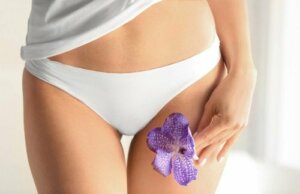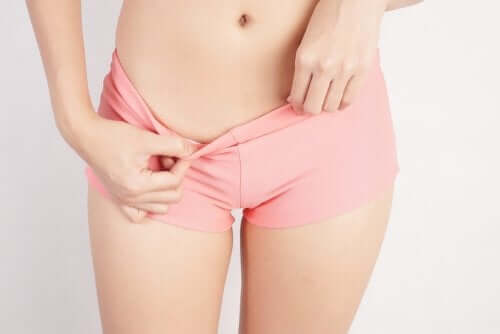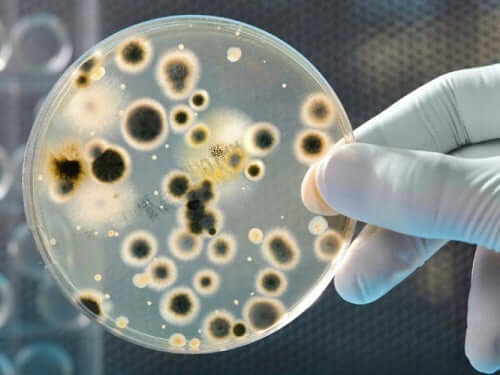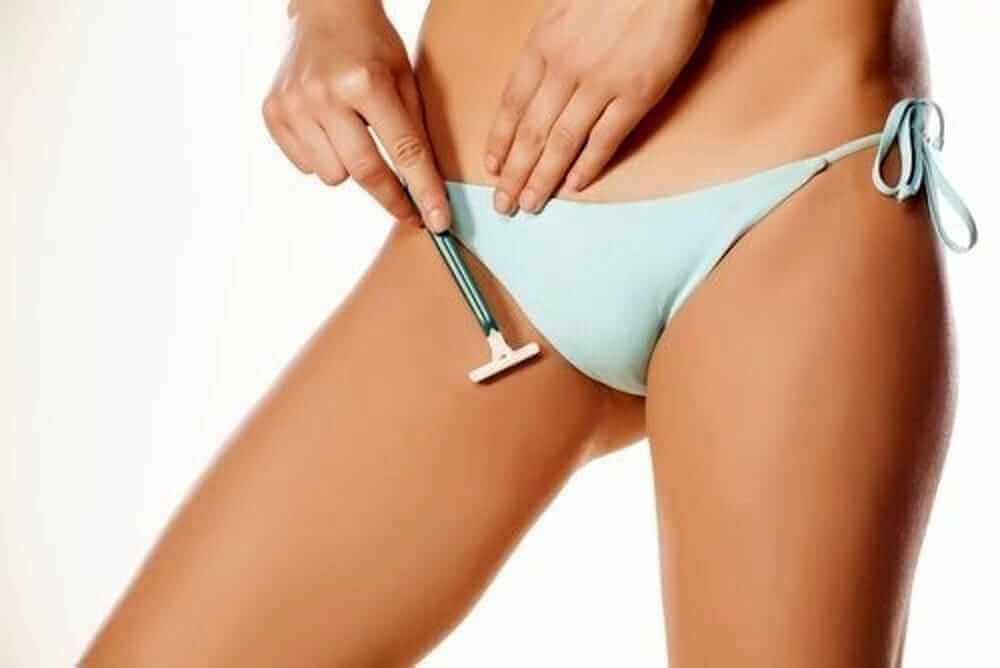Tips for Removing Pimples Near the Pubic Area

The inguinal region and the pubic area, because of its location and anatomical peculiarities, is very prone to the appearance of rashes and small pimples. These can be very annoying as they can itch and sting. Want to know how to remove the pimples near the pubic area?
You need to know why they appear in order to make a diagnosis and propose a treatment. In addition, you must take into account that it’s a humid area, with many folds that favor the appearance of infections and irritation. It can even be affected by the rubbing of clothes or by contact with chemical products. Let’s see some tips to treat it.
Most common types of pimples bear the pubic area
To know how to remove the pimples near the pubic area, we must be able to identify them by direct observation and know if it’s a pimple, a cyst, a blister, or a wart.
- Pimple: a red lump produced by infection and inflammation in the excretory tract of a sebaceous gland in the skin.
- Blister: a pouch that appears on the skin filled with serous fluid, caused by rubbing, burning or as a result of other skin diseases.
- Wart: small prominence that protrudes through the epidermis due to the dilation of vascular endings and the subsequent hardening of the epidermis.
- Cyst: small lump formed by white or yellow keratinized fat (cell of the epidermis that loses moisture and hardens). They’re commonly known as fat cysts or sebaceous cysts. When they’re large, they can be seen with the naked eye, with a magnifying glass or by palpation.
These are the most frequent, along with contact dermatitis caused by chemicals or the composition of the garment fabrics. In this article, we’re going to give you some interesting tips on how to remove the most common pimples near the pubic area.

Causes of pimples near the pubic area
The causes are very varied and it’s impossible to include all of them in this article. However, we’re going to mention the most frequent ones.
Pimples appear in people who have sensitive skin, whether they’re a man or a woman. Both waxing and shaving irritate the hair follicles, causing changes in their structure that finally manifest themselves in the appearance of pimples.
The remains of the substances used for waxing and shaving, once removed, cut or pulled out the hair, penetrate the follicle and cause this reaction on the delicate skin of the area.
They disappear after a few days. Sometimes the waxed or shaved hair grows into the follicle and produces greater irritation and inflammation (folliculitis), which can also become infected.
Also read: Myths and Truths of Laser Hair Removal
Excessive gland secretion
The sebaceous glands produce fatty substances to lubricate the area. If they’re produced in excess, they obstruct the exit channels, causing inflammation and redness of the gland.
Bacteria
These infiltrate the hair follicle and, due to their growth, produce small whitish-colored bags. They’re very contagious and sometimes severe when the immune system doesn’t function properly.

Clothing
Rubbing against underwear, or wearing very tight clothing, can cause pimples to appear in the public area. In addition, they’re favored by the temperature that increases the sweating and humidity of the area which stimulates the growth of colonies of bacteria and fungi.
Sexually transmitted diseases
Some sexually transmitted diseases cause pimples to appear near the pubic area. The most obvious and striking is chancre, which produces a large, purulent pimple in the pubic area that can drain out and spread infection.
Other causes
There are multiple causes such as Bartholin’s gland cysts, genital warts and herpes, which we’ll talk about in other articles.
Now, we want to give you some tips on how to remove the pimples near your pubic area and prevent them from reappearing.
You may be interested in: Why Popping Pimples is a Bad Idea
Preventive measures to avoid getting pimples near the pubic area
The following measures are aimed at preventing pimples from appearing near the pubic area. We also want to help reduce the discomfort and consequences. Put them into practice!
Recommendations for removing pimples near the pubic area
- Balanced, low-fat diet: it helps reduce the deposit of sebum in the epidermal glands.
- Proper hydration: it’s important to drink enough water so that the glands’ secretions are less thick and their exit through the skin pore is facilitated.
- Moderate skin cleansing: excess can be even more harmful than a lack of hygiene. The use of inappropriate products alters the normal bacterial flora and facilitates the colonization of pathogens. This can lead to the appearance of pimples near the pubic area and other more serious complications.
- Keep the area as dry as possible, to avoid the proliferation of bacteria and fungi. Dry thoroughly after a shower or bath.
- Use loose clothing made with good materials.
- Manage stress and anxiety: as these are recognized as causes of the appearance of skin alterations in any part of the body.
- Use sterile materials and devices for hair removal and new razor blades.
- Apply exfoliating creams: they eliminate dead cells and excess fat, and avoid the obstruction and inflammation of the sebaceous glands.
- Use topical antibiotics before and after waxing and shaving.
- Use cloths or hot water compresses: they help the pores open up and aid the removal of the retained substances that produce inflammation, redness and pain.

What can you do to avoid pimples near the pubic area?
- Using alkaline and abrasive soaps, since they dry the skin and are actually a factor in pimples in the pubic area.
- Don’t touch the pimples, as they can become infected and complicate their healing.
- Creams and excessively oily substances, because they produce the obstruction and inflammation of the sebaceous glands.
- Alcohol-based products that dry the skin and modify the bacterial flora.
- Tight clothing and excess heat in the area, because it increases sweating and therefore humidity. This can be a factor which leads to pimples near the pubic area.
- Exposure to stress and anxiety that predispose the appearance of pimples in the groin area.
- Injuries due to friction of the skin, either in sport by friction of the groin folds, against intimate clothes or when having sex. The friction produces overheating of the epidermis, heat and moisture maceration, and can even produce open lesions in the epidermis, in addition to blisters and pimples.
- Occlusive bandages that hinder blood circulation and cause friction against the skin.
- Contact with bacteria in jacuzzis and pools with inadequate pH treatment.
- Cosmetic products that contain copper, nickel, alcohol and other irritating substances.
These tips for removing pimples in the pubic area are usually very effective. However, if you follow these tips and don’t see any improvements, you’ll have to visit a specialist so that they can give you a correct diagnosis and prescribe the best treatment for you.
All cited sources were thoroughly reviewed by our team to ensure their quality, reliability, currency, and validity. The bibliography of this article was considered reliable and of academic or scientific accuracy.
Dall’Oglio F, Nasca MR, Fiorentini F, Micali G. Diet and acne: review of the evidence from 2009 to 2020. Int J Dermatol. 2021 Jun;60(6):672-685.
DeMaria AL, Flores M, Hirth JM, Berenson AB. Complications related to pubic hair removal. Am J Obstet Gynecol. 2014 Jun;210(6):528.e1-5.
Jović A, Marinović B, Kostović K, Čeović R, Basta-Juzbašić A, Bukvić Mokos Z. The Impact of Pyschological Stress on Acne. Acta Dermatovenerol Croat. 2017 Jul;25(2):1133-141.
Leung AK, Barankin B, Lam JM, Leong KF, Hon KL. Dermatology: how to manage acne vulgaris. Drugs Context. 2021 Oct 11;10:2021-8-6.
Meixiong J, Ricco C, Vasavda C, Ho BK. Diet and acne: A systematic review. JAAD Int. 2022 Mar 29;7:95-112.
Mukhopadhyay P. Cleansers and their role in various dermatological disorders. Indian J Dermatol. 2011 Jan;56(1):2-6.
McLaughlin J, Watterson S, Layton AM, Bjourson AJ, Barnard E, McDowell A. Propionibacterium acnes and Acne Vulgaris: New Insights from the Integration of Population Genetic, Multi-Omic, Biochemical and Host-Microbe Studies. Microorganisms. 2019 May 13;7(5):128.
Palma L, Marques LT, Bujan J, Rodrigues LM. Dietary water affects human skin hydration and biomechanics. Clin Cosmet Investig Dermatol. 2015 Aug 3;8:413-21.
Sánchez M, González-Burgos E, Iglesias I, Gómez-Serranillos MP. Pharmacological Update Properties of Aloe Vera and its Major Active Constituents. Molecules. 2020 Mar 13;25(6):1324.
Tan AU, Schlosser BJ, Paller AS. A review of diagnosis and treatment of acne in adult female patients. Int J Womens Dermatol. 2017 Dec 23;4(2):56-71.
This text is provided for informational purposes only and does not replace consultation with a professional. If in doubt, consult your specialist.









